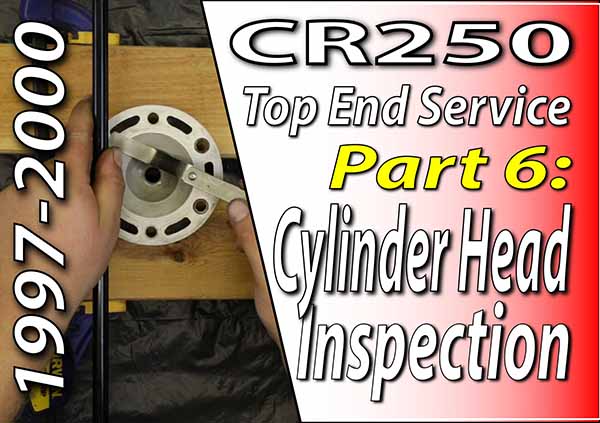How To Inspect The Cylinder Head On Your 97-01 Honda CR250
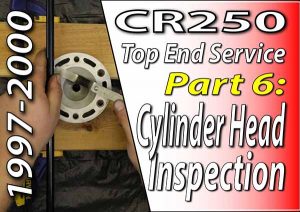 The Tools You Will Need
The Tools You Will Need
- Plastic Scraper → https://amzn.to/40dl2Q1
- Soft Brush
- Shop Towels
- Spark Plug Thread Follower → https://amzn.to/42feQcM
- Metal Lubricant/Oil
- Machinists Straight Edge → https://amzn.to/4g4fSM1
- Feeler Gauge → https://amzn.to/4hd7qen
- Emery Paper
- WD40
- Plastic Wrap
- Safety Glasses → https://bulltru.com
Pre-Service Notes
- I recommend opening the Service & Torque Specs in a new tab for easy reference.
- If you need parts and tools, make sure to buy them here! → https://amzn.to/4h4lDKq
- Pictures with captions are after the steps below.
- If you need any help, don’t hesitate to ask!
Cylinder Head Cleaning
- Clean the entire head with parts cleaner and a soft brush.
- Clean the cylinder head mounting surface with a plastic scraper.
- If carbon builds up in the combustion chamber, soak it in parts cleaner and gently scrub it off with a scouring pad.
- Clean the spark plug threads by threading a rolled-up shop towel through the hole.
- With the surfaced cleaned, inspect for any signs of obvious wear or damage
- Check the water jackets are free of obstruction and that the mating surface is smooth.
- You can smooth out small burs and pits with 600-grit emery paper, but be very careful. One-thousandth of an inch could take your head out of spec.
- Gently run your spark plug thread follower through the spark plug hole to correct any potential misalignment.
- If your threads are stripped out and your follower cannot correct them, you must install a Helicoil.
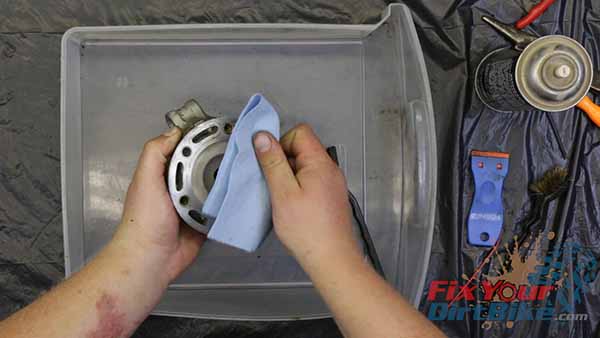
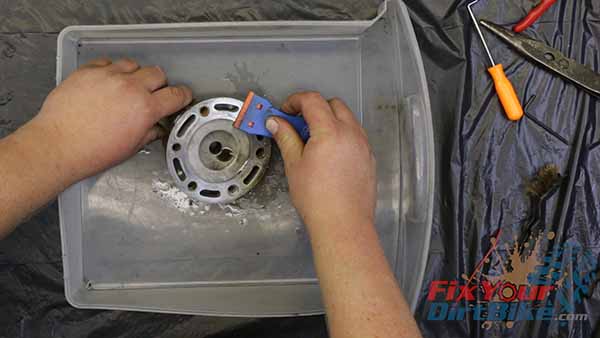
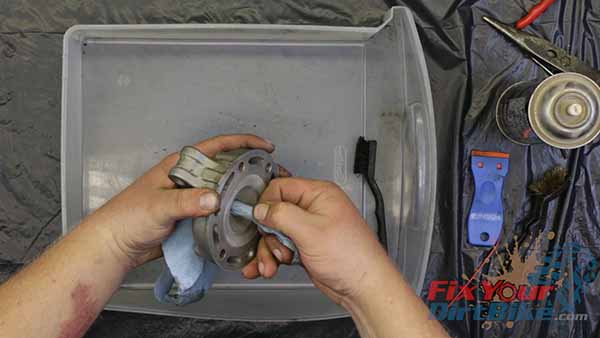
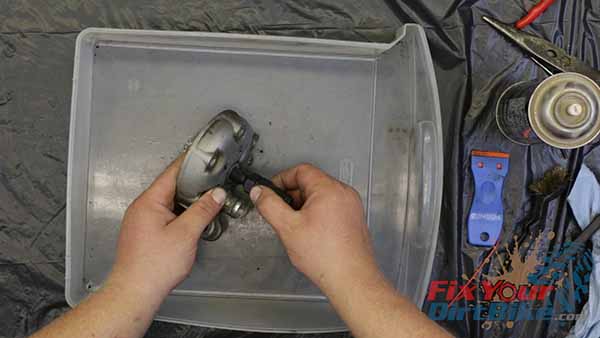
Inspect The Cylinder Head for Warp
- Lay your straight Edge across two adjacent mounting holes, and try to fit your feeler gauge underneath.
- Double-check the head for smoothness and try again if you find any gaps.
- If the gap still exists, record the measurement.
- Repeat this measurement around the head.
- The warp limit for your cylinder head is two thousandths (0.002) of an inch.
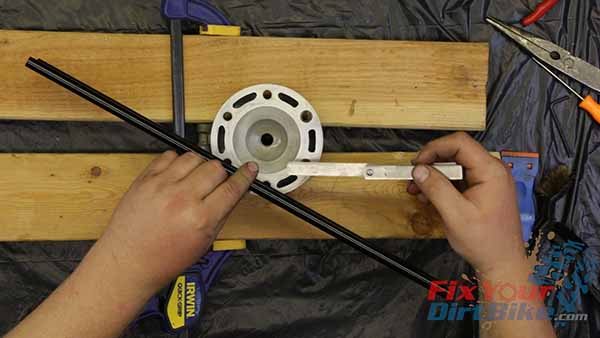
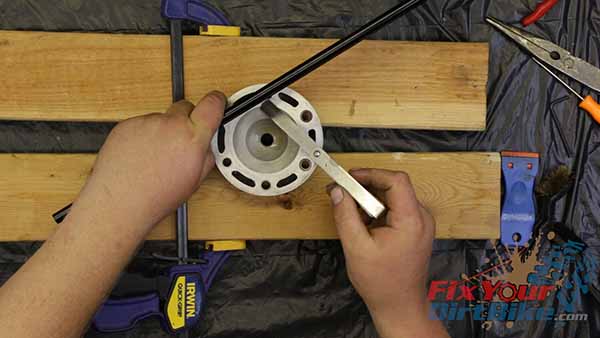
How To Surface The Cylinder Head
- You may be able to bring your head into spec with a sheet of 600-grit emery paper.
- Tape the emery paper to a sheet of glass and dampen it with water.
- Using light pressure, run your cylinder head in a figure-eight motion against the paper.
- Stop and measure your clearance every three passes.
- If you cannot return your head to spec, you must take it to a machine shop.
- Clean your cylinder head with HOT, soapy water, and rinse thoroughly.
- Dry with compressed air and double-check the mating surface for smoothness.
- If everything looks good, apply a light coat of WD-40 to prevent oxidation and wrap your cylinder head in plastic to prevent contaminants until ready for assembly.
- Finally, check the hanger plates for damage.
- If the plates are bent or the holes are elongated, they must be replaced.
- These have some dents on the top but are still straight with round holes.
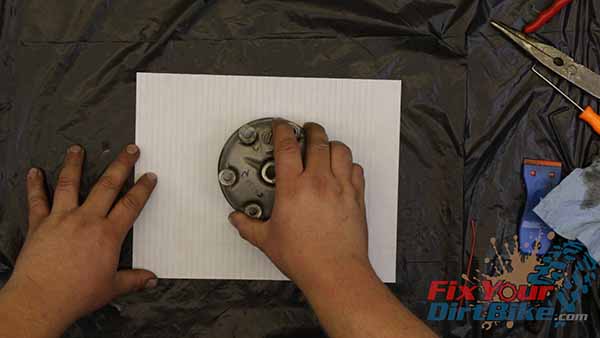
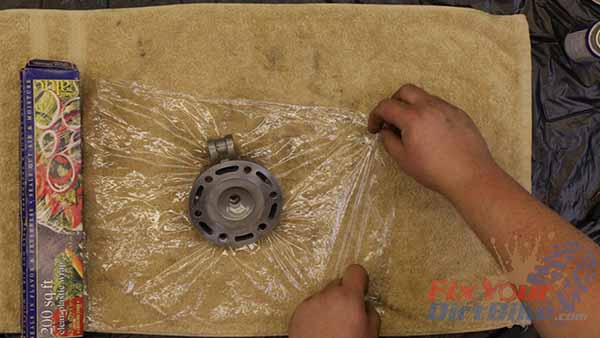
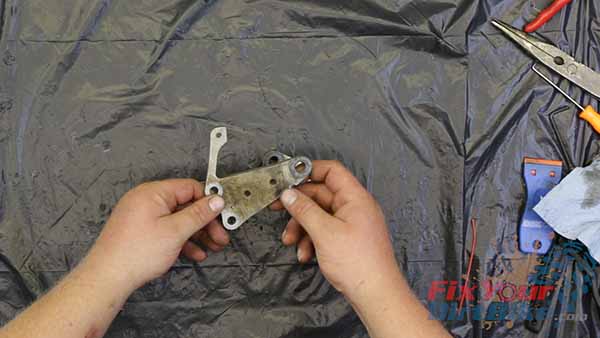
Keep Your ’97-’01 CR250 Running Right!
